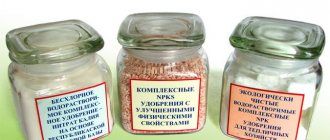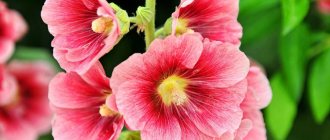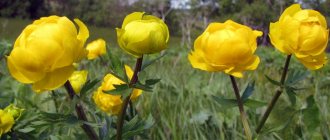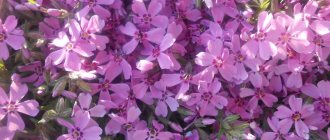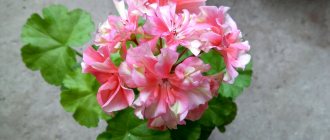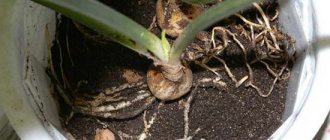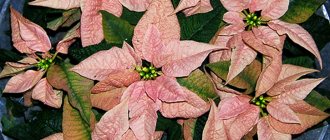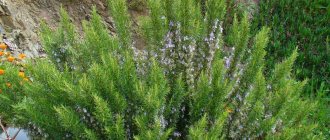Legends and origin story
There are many beautiful legends telling about the origin of a passionate flower with delicate velvet petals that can put you to sleep.
One of them says that when God created the earth, water, flora and fauna, everything turned out very beautiful. But under the cover of night these beauties were hidden. Night tried to open them for its hour with the help of the stars, but this attempt was unsuccessful. And then God decided to help the Night and created the Sleep and its dreams.
Over time, because of their cruelty, people began to have not only good dreams, but also terrible dreams and nightmares. Then Dream, in desperation, thrust his magic rod into the ground, plunging him into sleep. The rod came to life and turned into a poppy, without losing its ability to put one to sleep and cause visions. Since then, poppies have been considered dream-inducing plants.
According to another legend, the poppy is a symbol of earthly fertility and marriage due to its extreme fertility - its capsule contains up to 30 thousand small seeds that give life to new plants.
Many gods are depicted decorated with poppies. The goddess of earthly fertility, Persephone, is depicted wrapped in intertwined poppy flowers. The Greek god of dreams and reveries Hypnos (among the Romans - Morpheus) is depicted holding poppy heads in his hands or crowned with a wreath of these flowers. On the head of the God of Death Thanatos - a young man with black wings, wearing black clothes - also rests a wreath of poppy flowers. And this is not a complete list.
It is obvious that this seemingly simple flower is capable of making an impression. It entered the history and religion of different countries and many peoples due to its ability to induce sleep.
Diseases and pests
Papaver is susceptible to the following diseases:
- powdery mildew;
- root rot;
- black spot.
When signs of fungal diseases appear on the plant—spotting, wilting—it must be treated with fungicides.
Not only the bush itself must be treated, but also the soil underneath it.
Before spraying, it is necessary to cut off the parts damaged by the fungus and burn them. They should not be left on the site so that fungal spores do not spread to other garden crops.
Pests:
- aphid;
- spider mite
When pests are first detected, the bush must be treated with a solution of laundry soap. If the insect colony is large, insecticides are used.
Before treating the bushes with pest control agents, it is recommended to mechanically clean the bushes, removing as many insects as possible with your hands.
All the efforts made to care for the papaver pay off with interest when the most beautiful terry buds open in the flower beds
General characteristics of the plant
Poppy is an annual, biennial or perennial herbaceous plant of the Poppy family with a developed stem or stemless. The height of the plant can reach 150 cm depending on the variety. Several dozen species belong to it. The most famous is the sleeping pill opium poppy.
The poppy root system is fragile, so the plant reacts very poorly to transplantation. But if you still need to replant it, then you need to wait until spring or the end of summer.
The leaves of the poppy plant are cut into one, two or several parts. They can be smooth, but usually have small terry or even hairs on them.
The plant attracts attention with its amazingly beautiful flowers, similar to a fire bowl with black coals in its middle. Large flowers with rich, delicate petals, bathed in dew, and countless stamens in the center, open with the first rays of the sun. Their petals are painted scarlet, snow-white, pinkish, golden and even black in all possible shades.
The fruit of the poppy plant is an oblong, ovoid capsule, in the middle of which small seeds ripen in huge quantities. When a ripe capsule ruptures, the seeds are scattered over considerable distances. Seeds can also spill out through openings in the box and be carried by the wind.
Gardeners also value this plant for its ease of cultivation and low maintenance requirements. With enough sunlight, poppy grows in any soil, even depleted soil.
Botanical description
Peony poppy is a herbaceous, annual plant with the following external characteristics and description:
- bush height is about 90 cm;
- root system - core, strong;
- stem - straight, with minimal branching, color - green with a bluish tint;
- leaf plates are serrated, arranged alternately, painted the same color as the stem;
- peduncle - tall, may be bare or with a minimum number of leaves;
- buds - single, double, large in size, with entire petals;
- color - pink and its shades.
Breeders are constantly developing new varieties of double poppy, the colors of which can be very diverse.
This type of poppy is better known as “papaver”, in English reference books Papaver pygmaeum.
Annual species
One of the easiest plants to grow and care for is annual poppies. They have one highlight - a fragrant aroma.
Opium poppy
One of the most common types of annual poppies among gardeners is the sleeping pill, also known as the opium poppy (Papaver somniferun). The plant grows up to 140 cm. Its leaves are grayish-green in color, have a bluish tint and are covered with a waxy coating. Large flowers of simple or goblet shape grow up to 16 cm in diameter. Their petals are ordinary, but there are also varieties with carved edges of the petals.
The opium poppy blooms in mid-summer with scarlet, snow-white, pinkish, bright purple or even black flowers, and the color of the petals can be either monochromatic or multi-colored. An important fact: the varieties used in ornamental gardening do not contain prohibited substances in their chemical composition.
There is a double variety of this plant species - the peony poppy (Papaver somniferum paeony). Its flowers are spherical in shape with a diameter of up to 15 cm.
Among the most worthy varieties of sleeping pills, or opium poppy, are:
- Danish flag - the variety is distinguished by large fringed inflorescences of a specific color - in its center on a bright red background a cross-shaped pattern of white, cream or pale yellow is visible;
- Merry Family - the variety is distinguished by a unique seed capsule, its appearance reminiscent of a hen with chickens;
- White clouds - a variety with gorgeous double inflorescences of snow-white color;
- Yellow clouds - a variety with spectacular double flowers of a golden hue;
- The Black Clouds variety has very dark purple petals. The inflorescences are large, double;
- the Cardinal variety has double flowers of bright red color with a diameter of up to 9 cm;
- The Tsartroza variety grows as a branched bush up to 90 cm in height. Double flowers, up to 10 cm in diameter, delicate light pink with a white spot at the base of the petals;
- The Zverg Rosenrot variety grows as a bush up to 60 cm in height. Its large double reddish-pink petals with a snow-white spot at the base have an unusual oval shape. The petals inside the inflorescence are fringed.
Features of poppy
Poppy is a herbaceous rhizomatous plant that can be a perennial, biennial or annual. The taproot goes deep into the soil, while suction roots are placed along the periphery, which are easily torn off during transplantation. The surface of powerful straight shoots can be pubescent or bare. Pinnately dissected or entire leaf plates can be opposite or alternately arranged; their surface, as a rule, has hairy-bristly pubescence. The apical regular flowers have a large number of stamens; they are placed on powerful and relatively long peduncles. As a rule, the flowers are solitary, but there are species in which they are part of paniculate inflorescences. Whole large petals can be orange, pink, white, red, yellow or salmon in color. The fruit is a club-shaped capsule containing seeds inside, it is “clogged” with a flat or convex disk. When the capsule ripens, it bursts and its seeds scatter in different directions over a considerable distance. The seeds remain viable for 3–4 years.
PAPAVER (POPPY) - NOW EVERYTHING IS DIFFERENT!!! growing and care.
Perennial species
Some types of poppies are distinguished by their extraordinary vitality, and, one might say, are ineradicable, thanks to the ability to throw out shoots from pieces of roots remaining in the soil after weeding. These are perennial poppies; their most obvious representatives are the rock poppy and the Atlantic poppy, which are similar to each other. The oriental poppy, a perennial poppy species with exceptional decorative properties, has gained great popularity.
poppy
Most gardeners are unfamiliar with poppy (Papaver rupifragum), also called Spanish poppy. This is a low plant with a chic rosette of silver-colored leaves located in the root zone, which in themselves look very elegant and rich. Its semi-double flowers have satiny petals in a unique orange hue. It blooms profusely throughout the summer with small flowers no more than 2.5 cm in diameter.
Among the interesting varieties of poppy, one can highlight the variety Tangerite Parfait with semi-double inflorescences that appear continuously, one after another, throughout the summer period, subject to constant timely plucking of dried flowers. Particularly vigorous flowering occurs in early summer.
Eastern view
The largest representative of perennial poppies is the most beloved species among flower fans - the oriental or Turkish poppy (Papaver orientale). The plant is tall, can reach 120 cm. This poppy has elegant pinnately dissected elongated, hard leaves and stems, densely covered with hairs. The inflorescences are bright, usually with a black center, of a wide variety of colors, and can reach from 10 to 20 cm in diameter. The blue-black stamens inside the flower look very beautiful.
There are garden varieties with double and semi-double flowers. The period when poppies of this species bloom is limited to only 12-15 days from late May to early June.
Among the interesting varieties of oriental poppy are:
- Beauty Queen - a variety with satin saucer-shaped inflorescences;
- Black and White - this variety is distinguished by snow-white flowers. Their corrugated petals are very delicate, with a dark spot visible at their base;
- Blue Moon variety grows up to 100 cm in height. Very large flowers up to 25 cm in diameter are evenly colored in bright shades of pink with a blue tint;
- The Cedric Morris variety blooms with the largest flowers in pink tones. The petals are wavy. There is a dark spot at their base;
- the Kerlilock variety grows up to 70 cm. Unusual, slightly sloping flowers have a bright apricot color. At the base of their petals there is a black spot. The edge of the petals is serrated;
- the Allegro variety grows only up to 40 cm. The plant is notable for the fact that it begins to bloom already in the year of sowing. Its flowers are large in size and amazingly beautiful.
Flower growers also love the varieties Garden Glory, Mrs. Perry, Caryn, Pettis Plum and many other varieties.
Such types of perennial poppy as Alpine, Amur, white-pink, Scandinavian and a number of other charmingly beautiful, although less decorative varieties, compared to oriental poppy, are also cultivated.
Growing
Annual poppy germinates well when seeds are sown in open soil, so it is rarely grown as seedlings (they are not particularly viable and can easily die when transplanted). However, the perennial poppy flower is often grown using seedlings. To do this, when the first pair of leaf plates appears at the plant seedlings, they are transplanted into open soil
Landing
When planting poppy seeds, you need to consider whether they were purchased in specialized stores (including on the Internet) or collected independently from already ripe plants in your garden. In the first case, the seeds do not need to be prepared for planting, but in the second this is necessary. Self-collected seeds should be stratified.
Seeds collected from poppies growing in areas with relatively warm winters should be sown in the ground in the fall or late winter. In this case, the seeds should be allowed to adapt to the conditions of the cold soil so that in the future this poppy will easily survive the winter.
Seeds planted at the end of spring should be placed in the refrigerator (in the vegetable storage section) for a period of about two months. By avoiding the stratification process, you risk slow plant development and seedlings appearing too late.
When growing a poppy plant in the garden, keep in mind that all its varieties and varieties grow very well in fairly bright places in your area. As for the soil, almost every type of poppy has its own individual characteristics.
Thus, varieties accustomed to growing in dry soil, which is not rich in organic compounds, do not require any pre-planting preparation. In another case, the flower must be replanted in soil well enriched with nutrient additives (ordinary humus or bone meal will do).
To simplify planting seeds, it would be better to mix them with quick sand (in a ratio of 1/10). When starting planting, the first thing you need to do is loosen the soil to a depth of 25-35 mm. Next, carefully spread the seeds over the entire surface and sprinkle them with a small layer of soil on top.
It is not worth planting poppies in rows, since they will still not be able to remain in their place during the germination process and will move. The soil on which the planting was made should be systematically moistened slightly, avoiding excessive dryness.
As soon as the first shoots become visible, they should be thinned out immediately, keeping a distance of about 20 cm between them. If the seeds were planted in the spring, the seedlings will appear after 7-10 days. Flowering will begin somewhere in 3-4 months, after sowing and will continue for 30-45 days.
Poppy after flowering
An annual poppy that has already bloomed must be removed from the ground and destroyed. If you want to prolong its flowering, then periodically treat the growing boxes. If this is not done, then self-seeding will appear next season. In the fall, try to systematically get rid of plant remains and dig up the soil in their place.
After flowering, a perennial flower loses its spectacular appearance and therefore needs to be shortened by cutting off unnecessary parts. Such a plant will easily survive a moderately cold winter, but if very severe frosts are brewing and there is little snow, then it is better to cover the poppy bushes with dry foliage.
Poppy care
Caring for the plant is not so difficult. Firstly, it needs to be watered only when there has been severe drought for a very long time. Secondly, the surface of the soil next to the watered plant should be loosened and free from weeds.
It is better to sprinkle the upper area of the soil of your sprouts with mulch, which will minimize the care of the poppy. As for feeding the flower, this is not necessary, but it is quite useful for it.
Pests and diseases of poppy
Poppy does not get sick often, but with poor care and harmful environmental conditions, it can be affected by a fungus (powdery mildew), fusarium, downy mildew or alternaria. Thus, powdery mildew manifests itself by affecting the leaf plates of the poppy bush, on which a whitish coating forms.
A little time later, the plaque disappears, but leaves in its place the bodies of the fungus, which look like small reddish or black spots.
Powdery mildew is extremely harmful to poppy plants and has a bad effect on its growth and flowering. If you find signs of this disease on a poppy bush, it will need to be immediately treated with a soda solution in the following proportions: 40 grams of soda per 10 liters of water.
You can also use HOM: approximately 40 grams of the substance per bucket of water. You can also spray the poppy seeds with garlic infusion, mustard solution or fungicide (Medex).
Another poppy disease can be fusarium. In this case, the tops of the shoots and leaf blades of the infected bush become covered with blackish spots. The bush dries out, the boxes stop developing, become distorted and turn brown.
Fusarium damages the poppy's vascular system, which runs throughout the plant's body. Unfortunately, it is impossible to cure the affected plant and the affected poppy must be pulled out of the soil and destroyed, and the area near the bush should be treated with an antifungal solution (Bordeaux mixture, etc.).
Poppy sometimes becomes infected with another disease, Alternaria, which is also a fungus. In this case, yellowish-green spots will appear on top of the boxes and leaf blades. The affected poppy should be sprayed with a fungicide.
If your poppy bush is affected by peronosporosis, otherwise called downy mildew, then you will notice the following: the shoots and peduncles of the poppy will become distorted, the leaf plates will become covered with brownish spots, begin to change their shape and collapse.
Next, on the underside of the leaves, a grayish-purple coating will appear - these are spores of the peronosporosis fungus. It has a detrimental effect primarily on seedlings. As a result, poppy pods produce much fewer seeds. This disease must be dealt with in the same way as powdery mildew.
To prevent the development of fungal diseases in poppy, it should not be planted (for about three years) in the same place where it grew previously. In addition, in the fall, in the garden or personal plot where poppy grows, you need to periodically remove the plant remains of the flower.
During the same period, it is better to dig up the soil in the place of former poppies and loosen it to about 15-20 cm in depth.
As for the insects that annoy the poppy, we can especially highlight the weevil. This pest damages the roots of the plant, and its larvae love to eat poppy leaves. For prevention in this case, before planting the seeds, granules of seven percent chlorophos should be added to the soil (you can also use ten percent bazodin).
Keep in mind that if you have a perennial poppy, these substances should be added to the soil only between plants. In addition, poppy seedlings, as soon as they appear, need to be sprayed with chlorophos solution (2-3 times) with an interval of one and a half weeks.
The poppy can also be noticed by aphids; to combat it, the bush is sprayed with a decoction of ash or a soap solution (Antitlin and Actellik are also suitable).
Care and reproduction
It is known that to extend the flowering period of poppies, it is necessary to promptly remove faded shoots. But, since poppy is propagated by seeds, to harvest seeds of the varieties you like, several of these shoots must be left until the seed pods are completely ripe. Provided that the bolls remain on the stem, the plant will self-sow abundantly.
Sow seeds mixed with sifted sand before winter or early spring directly into the soil. It is important to choose a sunny area for sowing, since poppy flowers lose their brightness in shaded areas. After the emergence of seedlings, they must be thinned out, leaving 10-20 cm between plants.
The propagation method by seeds for perennial poppy species is slightly different from the propagation method for annual poppy species. Seeds are sown for seedlings in special boxes immediately after they are collected, and with the appearance of 1-2 true leaves, they are planted in special peat pots, which are subsequently dug into the ground.
How to grow on your own plot
If you grow poppies on your property, then you probably know that this is a completely independent plant. It does not require any care, unless it is a rare breeding variety. Reproduction mainly occurs by seed. Seeds are collected from bolls cut in early August after flowering. After pruning, they need time to ripen, and before that you can use the stem or peduncle as a dried flower. Some gardeners plant poppy seeds in the spring and keep the planting material in boxes until the beginning of spring in a dry bouquet.
Before you grow, remember that seed propagation of ornamental poppies is suitable for all perennial, biennial and annual species. There are two options: sowing in the ground in a permanent place or seedlings. The first method is easy to implement:
- 1) The seeds do not need to be soaked, just sow them in a permanent place, which should be sunny or in partial shade;
- 2) Wait for the first shoots and fertilize with mineral fertilizers.
The seedling propagation method is suitable for rare cultivars and dwarf varieties. Annuals have the ability to reproduce by self-sowing. If you sow seeds for seedlings, you need to do this in garden soil in boxes installed in the greenhouse. After the first 2 leaves appear, poppies can be picked into separate small containers. In them, the plants are grown and wait until 4-5 leaves appear, and then they are carefully transplanted to a permanent place, without destroying the earthen clod. Most often, young plants do not take on the qualities of their parents. But, they can be identical to the mother bush if territorial isolation is observed in the garden.
Perennial plants, in particular Oriental poppy, can be propagated by dividing the bush or from root cuttings. In this case, the characteristics of the daughter plant will coincide with those of the mother plant with maximum accuracy.
Useful and harmful properties
The medicinal properties of the unique poppy plant have been known since ancient times. Poppy seeds normalize the digestive system and relieve dysentery and diarrhea. Using them, you can get rid of insomnia and eliminate some diseases of the upper respiratory tract. Poppy is also widely used in the treatment of cancer.
The harm of poppy is due to its unreasonable use by the person himself. This magical flower serves as the basis for the production of opiates, the excessive use of which leads to drug addiction, destroying the human psyche and bringing terrible suffering to the addict.
Poppy seeds are widely used in cooking as additives in baked goods and a wide variety of sweets and cookies. At the same time, the beneficial properties of poppy seeds are completely preserved provided that they are properly collected and dried without any trace of narcotic substances in them.
The leaves, roots and stems of the plant are used only in medicine . They are not eaten.
Use in landscape design
In landscape design, poppies can also be planted near moisture-loving plants, such as large-leaved hydrangea (hydrangea macrophylla).
Other tips:
- Red or black varieties will perfectly set off the snow-white inflorescences of hydrangia.
- If you want to create a piece of a summer field on your site, then you need to add cereals (for example, feather grass) to the papaver, as well as the natural neighbors of poppies - cornflowers and daisies.
- Red poppies look great against the backdrop of bright green thuja and juniper needles.
- With the help of poppies you can create a “rustic” style in your area.
Papaver is also planted on alpine hills. Simple varieties in white, yellow or red-orange look especially good here.
Alpine slide
This representative of the flora quickly loses its decorative effect, so it is better to “disguise” it with other plants.
Distribution and ecology [ edit | edit code ]
Poppy is found in temperate, subtropical and less common cold zones.
Most poppies grow in dry places - steppes, semi-deserts, deserts, dry rocky mountain slopes.
There are about 75 species in Russia and neighboring countries, mainly in the Caucasus and Central Asia.
The most common species are the self-seeded poppy ( Papaver rhoeas
L.), growing as a weed in fields and along roads, Oriental poppy (
Papaver orientale
L.) - in the forest and subalpine zones of the mountains of the southern part of Transcaucasia, Hollow-stemmed poppy (
Papaver nudicaule
L.) - in the steppes of Altai, Eastern Siberia and Central Asia .

